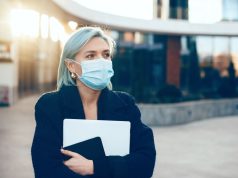IDWeek chairs Inger Damon, M.D., and Tom Talbot, M.D., discuss this year’s annual meeting with HD Live!
THURSDAY, Nov. 12, 2020 (HealthDay News) — Emerging COVID-19 science, including epidemiology, treatments, vaccines, and post-COVID-19 syndrome took center stage at this year’s IDWeek, the annual meeting of infectious disease experts worldwide, held virtually from Oct. 21 to 25. HD Live! sat down with IDWeek chairs Inger Damon, M.D., director of the U.S. Centers for Disease Control and Prevention Division of High-Consequence Pathogens and Pathology, and Tom Talbot, M.D., professor of medicine at the Vanderbilt University School of Medicine in Nashville, Tennessee, to break down the key takeaways of this year’s meeting.
According to Talbot, the three biggest takeaways of the meeting were all centered around COVID-19: the emergence of new science within just a few months, such as the understanding of post-COVID-19 syndrome in the recovery of patients; the medical and scientific communities’ ability to answer and further that science and the unintended consequences COVID-19 has had on the health care system; and an opportunity for across-the-globe learning and establishment of ways to improve interaction and virtual communication across the world.
While case counts of COVID-19 continue to climb, the overall consensus of IDWeek attendees was that the trajectory of the virus still remains uncertain, Damon said. Determining factors depend on whether people will follow recommendations to wear masks, socially distance, and wash their hands. Additionally, the release and uptake of a vaccine will also play a factor as to when society may return to some semblance of “normal.”
Every new emerging disease does not necessarily follow a script, and infectious disease experts are learning more about COVID-19 every day, Talbot said. “We’re learning as we go. I think that’s a challenge for our public to see, to understand why we recommend something that we didn’t before, as science is evolving,” he said. “People have to understand messages may evolve and change as science evolves.”
Another critical component of the fight against COVID-19 that was discussed during IDWeek involved the need for federal and state governments to work together. “We need to have a unified messaging and response across the country,” Talbot said, noting that to the layperson and medical community alike, the current recommendations and trends for masking are confusing. While not everyone needs to use the exact same types of intervention, Talbot strongly recommends the need to provide similar messaging and understanding across the country.
IDWeek attendees also discussed the need for countrywide mask mandates. Countries that instituted masking mandates quickly after the disease was recognized had a much more rapid resolution and control of the disease as well as decreased morbidity and mortality rates, Damon said. “Certainly, there’s hierarchies of masks, and ones that work better, but even a simple cloth-based mask appears to show benefit in the spread of disease,” she said.
IDWeek also put a spotlight on newly released data indicating that personal protective equipment and precautions put into place in hospitals and clinics have been very effective, Talbot said. There have not been widespread outbreaks among health care workers attributed to hospital or clinical exposures, and when there have been outbreaks, it appears they have been due to community exposure or exposures from gathering in the break room, where people may have let their guard down, Talbot explained.
Damon also discussed how novel tools can be used to track disease and predict outbreak hotspots. “I think there are lots of new tools that are being developed to help us track and understand the spread of disease. So, I think whole genome sequencing and molecular genetics are going to be really important tools,” Damon said.
A session at the end of IDWeek touched on lessons learned from the eradication of smallpox, which was officially eradicated on May 5, 1980, and how these lessons — such as isolating the ill and ensuring vaccines are easy to administer and accessible — can be applied to COVID-19. While eradication of COVID-19 might not be the immediate goal, Damon said, it is the ultimate goal.
Copyright © 2020 HealthDay. All rights reserved.








